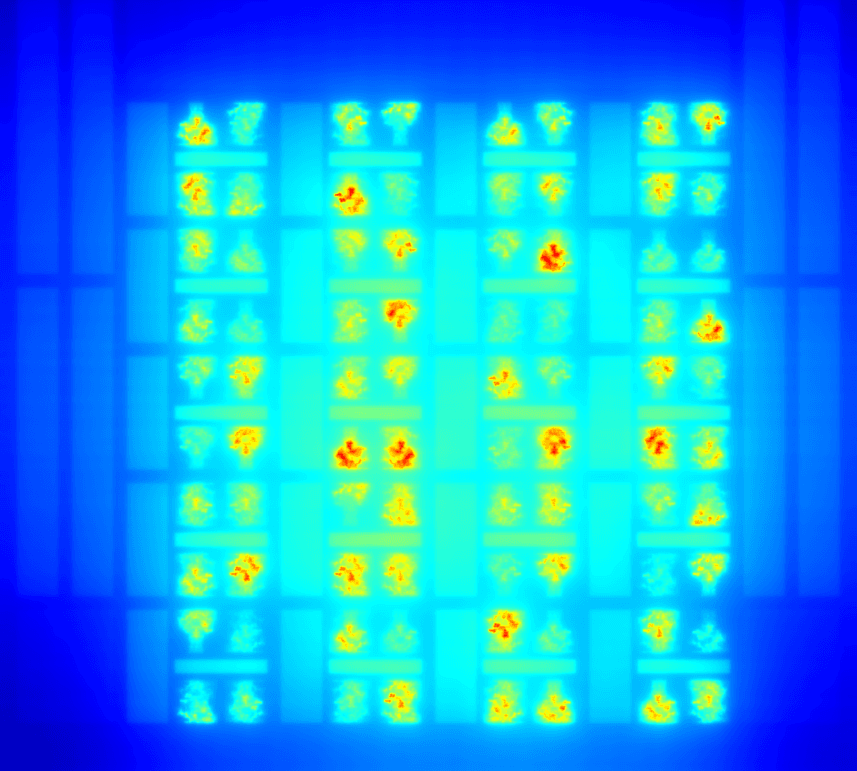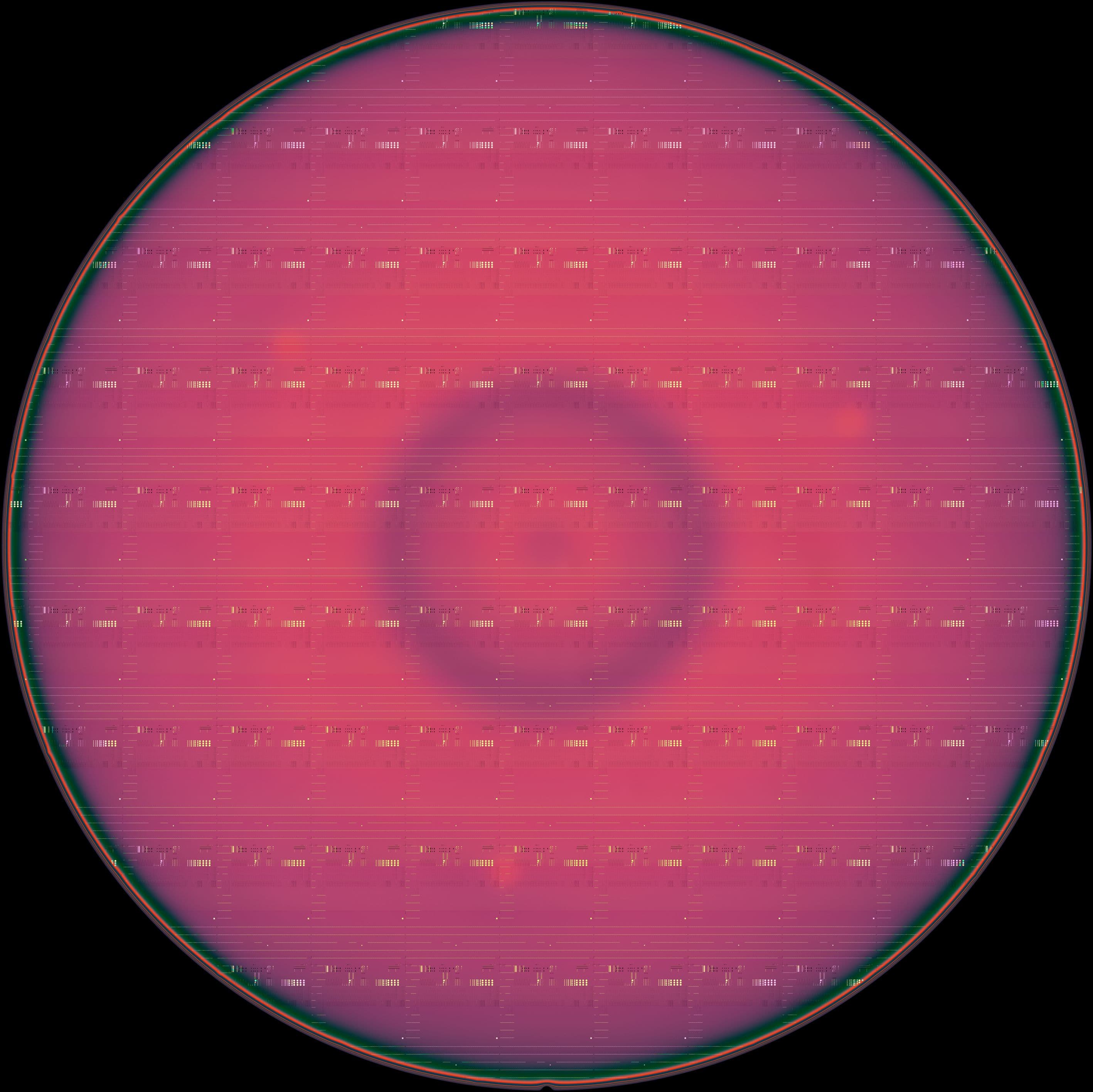Living its legacy: imec – independent R&D hub for nano- and digital technologies
1984 marked the breakthrough of the personal computer: IBM launched its PC, Apple brought the first Macintosh to the market, and the floppy disk was introduced as the first data-storage medium for the masses.
That same year, imec was launched in Leuven, Belgium. The founders were a group of visionary young researchers, some of whom had studied and worked in Silicon Valley and were inspired by the revolution they had witnessed there. Their effort to create an electronics superlab and spearhead a new industrial revolution in Flanders was backed by generous funding from the regional Flemish government.
The vision of imec’s founders was to make CMOS computer chips ever smaller, more powerful, and energy-efficient. They aimed to turn the observation of Gordon Moore, Intel’s founder, into a law: doubling the power of ICs every 24 months. Under the consecutive leadership of CEOs baron Roger Van Overstraeten, Gilbert Declerck, and Luc Van den hove, imec has shown continuous growth, proving that its partnership model is a successful formula to create stability in an otherwise cyclic semiconductor domain.

Baron Roger Van Overstraeten, imec's first CEO
From assisting to enabling the industry in semiconductor functional scaling
In 1984, imec was an emerging lab with a starting grant and a steep ambition. Substantial investments in infrastructure were part of imec’s strategy from the start, as was illustrated by the on-site 200mm cleanroom facilities. The center continuously expanded with more offices, labs, and later a 300mm cleanroom, and Attolab (a dedicated facility to push the boundaries of EUV lithography). It did not take long before companies started to turn to imec to complement their internal R&D. Not least because of imec’s strategic partnerships with leading equipment manufacturers, which assured the availability of state-of-the-art alpha and beta tools.

Imec 1, the first imec building.
Gearing up to get chip manufacturers and tool providers in pole position in the race for producing more complex chips on larger wafers, the investments in infrastructure went hand in hand with imec’s pioneering open innovation model. Through this model, the entire semiconductor value chain work together in pre-competitive research. From chip manufacturers and fabless companies to integrators and material and tool suppliers, they share the burdens and risks of the increasingly complex R&D.

300mm cleanroom
Starting with an initial group of 70, today imec counts around 6,000 brilliant minds. The center’s turnover grew from a few tens of millions to over 940 million euro. The bulk of the revenue results from direct collaborations with companies and exceeds the grants from the Flemish government multiple times over. These grants are critical to imec’s success. They allow the center to perform more fundamental research and build valuable intellectual property (IP), which may be at the foundation of new companies or enable imec to offer the industry new options that have not been explored before.
Today, the efforts and complexity involved in improving the performance of chips have skyrocketed, not least through the emergence of big data, artificial intelligence, and the Internet of Things. Imec, in its turn, has evolved from an emerging lab that assists companies to an acclaimed research hub where the global electronics community convenes to advance the industry roadmaps.

Imec Leuven today
From semiconductors to smart applications
More than 40 years after its founding, imec’s vision is more alive than ever. It wants to push the limits of what is possible and shape the future through technology.
From its foundation, imec has pursued not only semiconductor technology R&D but also its potential application sectors. For example, energy research has been a strategic pillar from the start. And it has evolved over the years from mainly silicon photovoltaics R&D to covering the full scope of energy generation, conversion, and storage. Not least thanks to imec’s involvement in two collaboration initiatives: Solliance (NL) and EnergyVille (B).
Imec joined the Eindhoven-based ‘solar research alliance’ Solliance shortly after its foundation in 2010. Together with industrial and academic partners, Solliance Solar Research plays a leading role in the worldwide research and development of thin-film solar technology. Since 2011, imec has contributed to the EnergyVille initiative, a collaboration with KU Leuven, VITO, and UHasselt to develop the technology and knowledge to support public and private stakeholders in transitioning to an energy-efficient, decarbonized, and sustainable urban environment.
This evolution in energy-oriented research illustrates the enhanced application focus at imec. Since the turn of the century, imec’s researchers have increased their portfolio beyond improving CMOS technology to aiming to apply semiconductor technology and knowledge to an increasing variety of smart application domains, which include sustainable energy, health and life sciences, automotive, Industry 4.0, agrifood, smart cities, and education.
To support this application-driven strategy, imec set up several dedicated facilities and partnerships. For example, Neuro-Electronics Research Flanders (NERF) was set up in 2011 with VIB and KU Leuven as an interdisciplinary research center to study neuronal circuits and develop new technologies to link circuit activity to brain function. Also brain-related is Mission Lucidity, initiated in 2018 in partnership with VIB, KU Leuven, and UZ Leuven as a world-class biomedical, clinical, and nanotechnology R&D hub on a mission to decode, and eventually cure or prevent dementia and other neurodegenerative diseases. Imec’s ExaScience lab was set up in 2013 to develop high-performance computing software solutions to process and mine the enormous amounts of data from, for example, molecule testing for drug discovery or other applications in pharma, healthcare, or Industry 4.0.
In 2016, imec merged with iMinds, a Flemish R&D center mainly involved in digital technologies. The merger brought together two pieces of the technology puzzle that are key in today’s smart applications: smart hardware and smart software. Imec started developing and optimizing hardware and software alongside each other, striving for truly unique solutions in digital system innovation.
Think global, act local
Imec exports its success model all over the world. In doing so, it adopts the philosophy of good local citizenship, complementing its overall R&D roadmaps with local partnerships and local-impact projects in the regions where it establishes its activities.
In 2005, imec and TNO established Holst Centre at High Tech Campus Eindhoven in the Netherlands with support from the Dutch government. This independent R&D center develops technology that responds to global societal challenges and contributes to new micro-electronic and sensor technology solutions in the fields of health & vitality, energy & climate, and Mobility & Industry 5.0. In 2019, imec also co-founded OnePlanet Research Center in the Netherlands: a multidisciplinary collaboration agreement between Wageningen University & Research (WUR), Radboud University, Radboudumc, and imec; supported by the province of Gelderland (the Netherlands). OnePlanet Research Center uses the latest chip and digital technologies to contribute to a society in which everyone can live healthily and access healthy and sustainable food.

Left: Holst Centre, Right: OnePlanet Research Center
In 2016, imec, with the support of Osceola County, established a design center at NeoCity, Florida. And in 2019, imec set up a research outpost in collaboration with the renowned Berkeley University in California, USA. The focus at Berkeley is on the co-designing of systems and technologies to enable the next generation of smart devices, novel architectures for machine learning, and artificial intelligence. To better serve its partners, imec also has regional partnership offices across the globe.
Services and venturing
In this smart age, many entrepreneurs and companies have great ideas for breakthrough products conceived to shake up their markets and improve the comfort and health of people. But because of the complexity of creating smart hardware and matching software, they often lack the expertise to bring these ideas to fruition.
With its expertise, IP, and infrastructure, imec is the ideal partner to develop these ideas and help entrepreneurs with different kinds of expertise. From the early days, imec has offered design and development assistance from idea to prototype and even volume production. Over the years, imec has expanded its venturing activities with, for example, imec.istart (a leading start-up accelerator program), and imec.xpand (a venture fund for deep-tech scale-ups). Imec also actively creates its own spin-offs; over two hundred since its foundation in 1984. Since 2017, imec thereby adopted a new approach with additional dedicated resources, which resulted in 24 new spin-offs.
The secret to imec’s success?
The most significant success factors behind this thrilling ride through history are
- Imec’s people: an ever-growing group of the smartest technologists from all over the globe.
- Imec’s unique infrastructure: whatever can be imagined can be made in our offices, labs, and cleanrooms.
- Imec’s research: independent and based on a vision of a better future for our planet and its people.

Want to hear the stories behind the history?











